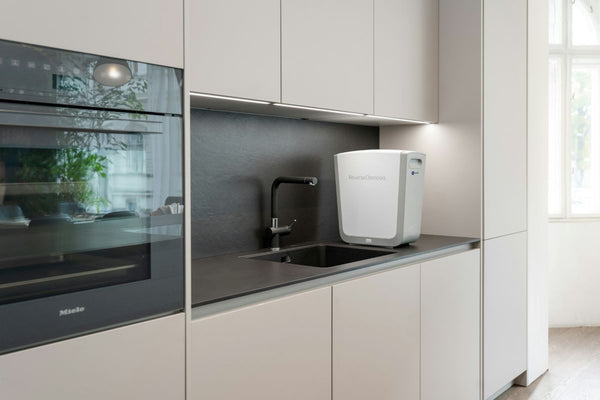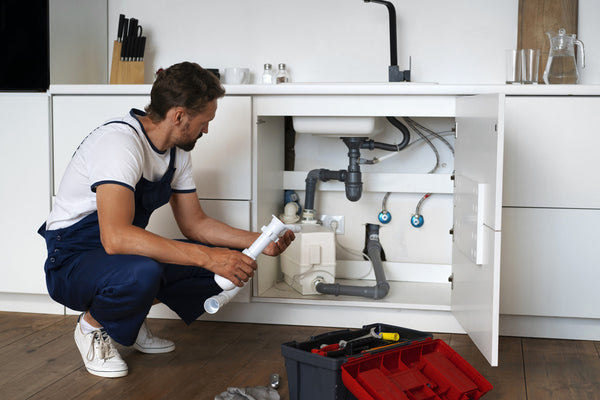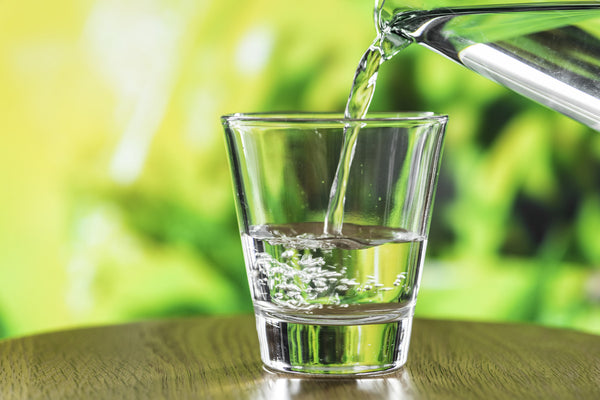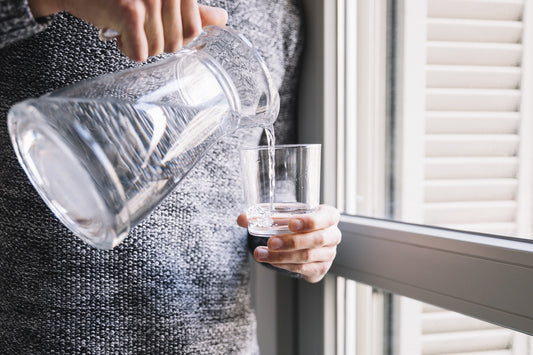Introduction
Concerned about the quality of your drinking water? With pollutants ranging from chemicals to biological contaminants frequently present in water supplies, selecting an effective filtration system is more crucial than ever. Reverse osmosis (RO) systems offer a robust solution, capable of removing a broad spectrum of impurities to deliver safe, clean drinking water. This guide delves deep into the workings of RO systems, illustrating why they are essential for ensuring the purity of your drinking water and guiding you through the process of selecting the best system tailored to the needs of your household.
Understanding Reverse Osmosis
What is Reverse Osmosis?
Reverse osmosis represents a sophisticated filtration method where water is forced through a semi-permeable membrane. This membrane is designed to block contaminants but allows water to pass through, effectively separating harmful substances from the water molecules. The result is water that is free from impurities, making it safe for drinking.
How does it work?
The RO process operates under the principle of cross-filtration, where the water is pushed under pressure across the membrane’s surface, sweeping away contaminant build-up and flushing them out with the wastewater. The remaining purified water, which traverses through the membrane, is collected for drinking. This dynamic process ensures high efficiency in contaminant removal, making RO systems a favored choice among many households seeking reliable water purification.

The Need for Reverse Osmosis
Common contaminants in water
Water sources can be plagued by a variety of contaminants, including fluoride, arsenic, nitrates, lead, bacteria, and viruses. RO systems are engineered to address these threats by removing up to 99% of dissolved salts (ions), particles, colloids, organics, bacteria, and pyrogens from the water (though it must be noted that an RO system itself does not remove gases).
Benefits of using RO systems
RO systems offer several advantages: they produce water of reliably high quality, removing not only physical impurities but also molecular compounds. This makes them particularly beneficial for households relying on private wells or located in areas where municipal water treatment is insufficient. By using an RO system, you can significantly reduce potential health risks associated with contaminated water and enjoy better-tasting and smelling drinking water.
Assessing Your Water Source
Municipal vs. private well water
The choice of whether to install an RO system often depends on your source of water. Municipal water is usually pre-treated and complies with safety standards for contaminants, although it might still contain undesirable levels of dissolved solids like calcium and magnesium. Private wells, on the other hand, carry a higher risk of contamination from both biological organisms and chemical pollutants, making RO systems particularly crucial in these settings.
How water source affects RO choice
Selecting the appropriate RO system requires understanding the specific contaminants present in your water. This can be determined through comprehensive water testing, which will provide the data needed to choose an RO system equipped to effectively purify your home’s water.

The Importance of Water Pressure
Necessary water pressure for RO systems
Effective operation of an RO system is contingent upon adequate water pressure, typically about 40 to 60 pounds per square inch (psi). This pressure is necessary to push water through the semi-permeable membrane and against the natural osmotic pressure of the water.
Solutions for low water pressure
If your household water pressure is below the optimal level for RO operation, installing a booster pump is a practical solution. A booster pump enhances the pressure of incoming water, ensuring that the RO system functions efficiently and maximizes contaminant removal, thereby providing consistent and reliable water flow for your home.
Calculating Water Demand
Estimating household water usage
To effectively size an RO system, it is important to estimate your household's daily water usage. This includes water used for drinking, cooking, ice-making, and any other needs. A correctly sized RO system should be capable of meeting or exceeding this demand to ensure an uninterrupted supply of purified water.
RO System Capacity Considerations
When considering the capacity of an RO system, it's crucial to account for the water needs beyond just drinking. Cooking, cleaning, and the operation of household appliances like ice makers and refrigerators also consume a significant amount of water. Depending on your overall water demand, a higher capacity RO system might be necessary. This ensures that you have enough purified water at your disposal without overstraining the system, which can lead to frequent maintenance issues and decreased efficiency.
Budget Considerations
Cost of Installation and Maintenance
While the upfront cost of an RO system might seem steep, the investment is justified by the long-term health and safety benefits it provides. Ensuring that your drinking water is free from harmful contaminants can prevent health issues associated with waterborne pollutants, potentially saving on medical costs down the line.
Long-Term Benefits vs. Initial Outlay
The ongoing costs of maintaining an RO system, which include regular filter replacements and occasional servicing, should also be considered. These maintenance tasks later on.
Choosing the Right RO System
Types of RO Systems
Reverse osmosis systems come in various forms, tailored to different residential and commercial needs:
Under-Sink RO Systems
Compact and efficient, these are ideal for individual households where installation space is limited.
Whole-House RO Systems
Designed to meet the needs of an entire home, these systems are installed at the point where water enters the house, ensuring that all water outlets dispense purified water.
Commercial RO Systems
These are built for high capacity and are commonly used in businesses and large buildings.
Features to Consider
When selecting an RO system, consider features that enhance ease of use and maintenance, such as modular filter systems for easy replacement, automatic shut-off valves to conserve water, and clear housing for visually checking filter condition. Quality certifications from recognized standards bodies, like NSF or WQA, are indicative of reliability and performance. Additionally, look for systems with robust warranties that can provide peace of mind over the system's operational lifespan.

Installation of RO Systems
Step-by-Step Guide
Installing a reverse osmosis (RO) system can be straightforward if you carefully follow these steps. Initially, you should choose a location that is easily accessible for future maintenance. Under the kitchen sink or in a basement are typically ideal spots due to their proximity to water lines and drains. Once you have selected the location, mount the RO system securely to a wall or a cabinet, adhering closely to the manufacturer's instructions to ensure stability.
The next step is to connect the water supply. You will need to tap into the cold water line using a valve; this valve will direct water into the RO system where it will be purified. Following this, it's important to install the drain line. Connect this line from the RO system to your sink’s drain pipe. This setup is crucial as it disposes of the contaminants removed from your water.
Finally, set up the faucet on your sink specifically for dispensing the purified water. This specialized faucet will allow you to easily access clean water directly from your RO system.
DIY vs. Professional Installation
While it is possible to install an RO system on your own, saving some costs, this task does require a basic understanding of plumbing. DIY installation allows for a hands-on approach and can be quite fulfilling as a home improvement project. However, professional installation offers the assurance that the system will be set up correctly, which is critical for its optimal performance and efficiency. Professionals are adept at foreseeing and handling potential installation issues such as leaks or pressure problems, ensuring that the system operates smoothly from the start.
Maintenance and Care
Routine Maintenance Tasks
Maintaining an RO system is essential to ensure its longevity and optimal functioning. Routine maintenance tasks include regularly changing the filters and membrane according to the manufacturer's recommendations, which is typically every 6 to 12 months depending on usage and water quality. It’s also crucial to check the system regularly for leaks and inspect all components for signs of wear and tear.
Sanitizing the system annually is another important maintenance task that helps to prevent microbial buildup, ensuring the system remains hygienic and efficient. Additionally, it's beneficial to troubleshoot common issues that may arise, such as leaks, slow water flow, or unusual noises. These issues are often solvable by checking for loose connections, replacing clogged filters, or adjusting the pressure settings to accommodate changes in water pressure.
Troubleshooting Common Issues
Common issues that might arise with RO systems include leaks, slow water flow, or unusual noises, which can detract from the system’s efficiency and longevity. To address these issues:
Leaks
These are often due to loose connections or worn-out seals. A thorough inspection of all connection points and replacing any faulty parts can resolve leaking issues.
Slow Water Flow
This may be caused by clogged filters, a fouled membrane, or low water pressure. Replacing clogged filters or the RO membrane can restore flow rate. If the issue is due to low water pressure, adjusting the pressure settings or adding a booster pump may help.
Unusual Noises
Noises typically occur from air trapped in the system or high pressure. Flushing the system can remove air pockets, and adjusting the pressure can reduce noise related to high water velocity.

Performance and Efficiency
How to Evaluate RO System Performance
To effectively assess and enhance the performance and efficiency of an RO system:
Evaluating Water Purity
Utilize a TDS (total dissolved solids) meter to measure the concentration of contaminants in the water. A significant reduction in TDS levels post-filtration indicates effective performance.
Checking Flow Rate
Verify that the system dispenses water at the manufacturer-specified rate. If the flow rate is below expected levels, it may suggest a need for maintenance or adjustments in system settings.
Tips for Maximizing Efficiency
Installing a Pre-filter
This helps protect the RO membrane from sediment and chlorine, which can degrade the membrane over time.
Routine Maintenance
Ensuring that maintenance is performed regularly keeps the system operating efficiently. This includes replacing filters and membranes as recommended by the manufacturer.
Upgrading to a Permeate Pump
This can reduce the amount of wastewater produced and increase the volume of clean water generated, improving overall water efficiency.
Environmental Impact
Ecological Considerations
While RO systems are effective in purifying water, they do produce wastewater. Choosing systems with better water recovery ratios and integrating water-efficient technologies like permeate pumps can reduce waste.
Waste and Water Conservation
Reusing RO waste water for non-potable purposes, such as gardening or flushing toilets, is a practical way to conserve water and mitigate the system’s environmental impact.
Legal and Health Regulations
Ensuring compliance with local water purification standards is crucial for both legal and health reasons. RO systems that meet these standards can significantly improve water quality, offering protection against a wide array of potentially harmful contaminants. Regular testing and certification can help maintain compliance and ensure the system provides the health benefits expected.
Advancements in RO Technology
Recent Innovations
Recent advancements in membrane technology have led to the development of more efficient RO systems. These innovations include more selective membrane materials that can reduce water waste and enhance the speed of the purification process.
Future Trends in Water Filtration
The focus on sustainability is driving innovations in RO technology, aiming to reduce energy consumption and further increase water conservation. Future developments may include more advanced materials and system designs that optimize water use and decrease environmental impacts.

Conclusion
Choosing the right reverse osmosis system can substantially improve the quality of your drinking water, contributing to a healthier lifestyle. By understanding the operational, maintenance, and technological aspects of RO systems, you can make a well-informed decision about which system is best suited for your home’s needs. This guide has equipped you with the knowledge needed to select, maintain, and benefit from a reverse osmosis water filtration system, ensuring clean and safe drinking water for your household.
FAQs
How often should RO filters be changed?
Typically, RO filters should be changed every 6 to 12 months, but this can vary based on water usage and the initial water quality.
Can RO systems remove all contaminants?
While RO systems remove a wide range of contaminants, including bacteria, viruses, cysts, chemicals, and heavy metals, some volatile organic compounds (VOCs) and gases may pass through.
Is an RO system worth the investment for city water?
Yes, especially if the city water contains contaminants or additives like fluoride and chlorine that affect taste and health.
How much water does an RO system waste?
Traditional RO systems can waste up to 4 gallons of water for every gallon of purified water produced, though modern, efficient systems significantly reduce this ratio.
Are there alternatives to RO systems for water purification?
Alternatives like UV water purifiers, carbon block filters, and sediment filters are available but may not remove as broad a spectrum of contaminants as RO systems.
Featured image: Image by freepik





